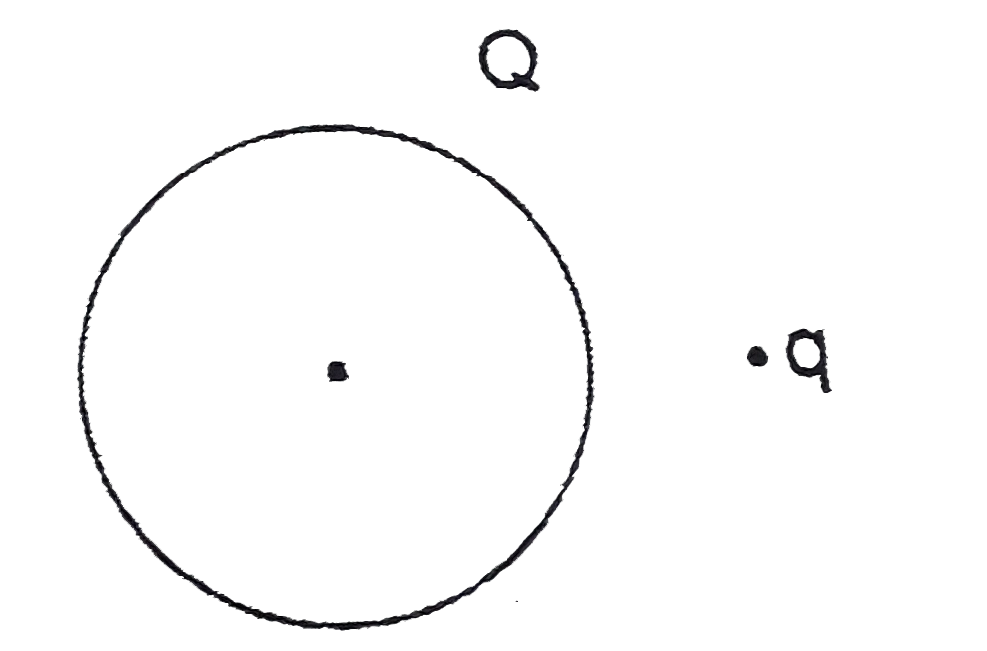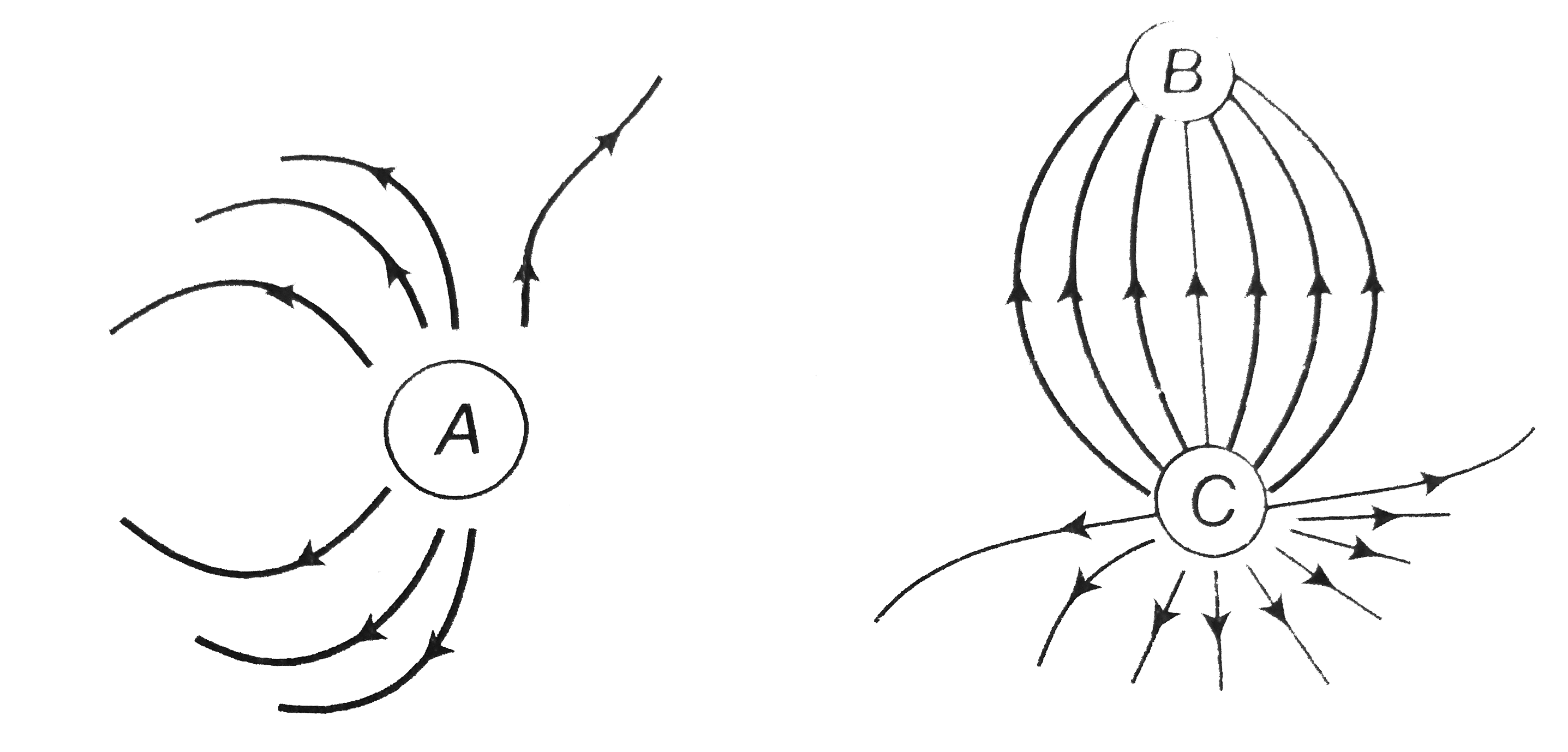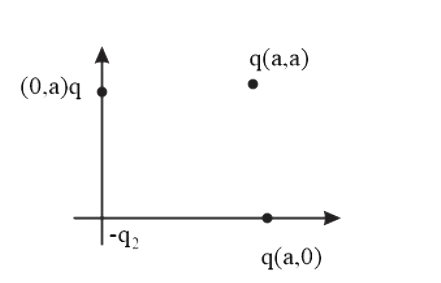The field acting on the following charges is
electrostatic both inside and outside the cell
non -electrostatic bogh inside and outside the cell
electrostatic inside the cell and non electrostatic outside the cell
non electrostatic inside the cell and electrostatic outside the cell
The correct Answer is:D
To solve the problem regarding the electric field acting on charges inside and outside a cell, we will analyze the situation step by step.
1. Understanding the Environment:
- We need to differentiate between the electric field inside the cell and outside the cell. The cell has two compartments: one for positive charges and one for negative charges.
2. Electric Field Inside the Cell:
- Inside the cell, the charges are separated into positive and negative compartments. In this scenario, the charges are not stationary and do not exert electrostatic forces on each other in the same way they would in free space. Therefore, the electric field inside the cell is considered non-electrostatic.
3. Electric Field Outside the Cell:
- Outside the cell, if we have two charges (either both positive, both negative, or one of each), they will exert forces on each other due to their electric fields. This interaction is governed by electrostatic principles, regardless of the distance between them. Hence, the electric field outside the cell is electrostatic.
4. Evaluating the Options:
- We have four options to evaluate:
- Option 1: Electrostatic both inside and outside the cell (Incorrect).
- Option 2: Non-electrostatic both inside and outside the cell (Incorrect).
- Option 3: Electrostatic inside the cell, non-electrostatic outside the cell (Incorrect).
- Option 4: Non-electrostatic inside the cell, electrostatic outside the cell (Correct).
5. Conclusion:
- Based on the analysis, the correct answer is that the electric field inside the cell is non-electrostatic, while the electric field outside the cell is electrostatic.
Final Answer:
The correct option is: Non-electrostatic inside the cell and electrostatic outside the cell.
- We need to differentiate between the electric field inside the cell and outside the cell. The cell has two compartments: one for positive charges and one for negative charges.
- Inside the cell, the charges are separated into positive and negative compartments. In this scenario, the charges are not stationary and do not exert electrostatic forces on each other in the same way they would in free space. Therefore, the electric field inside the cell is considered non-electrostatic.
- Outside the cell, if we have two charges (either both positive, both negative, or one of each), they will exert forces on each other due to their electric fields. This interaction is governed by electrostatic principles, regardless of the distance between them. Hence, the electric field outside the cell is electrostatic.
- We have four options to evaluate:
- Option 1: Electrostatic both inside and outside the cell (Incorrect).
- Option 2: Non-electrostatic both inside and outside the cell (Incorrect).
- Option 3: Electrostatic inside the cell, non-electrostatic outside the cell (Incorrect).
- Option 4: Non-electrostatic inside the cell, electrostatic outside the cell (Correct).
- Based on the analysis, the correct answer is that the electric field inside the cell is non-electrostatic, while the electric field outside the cell is electrostatic.
The correct option is: Non-electrostatic inside the cell and electrostatic outside the cell.
Topper's Solved these Questions
- BOOK - NARAYNACHAPTER - ELECTRIC CHARGES AND FIELDSEXERCISE - EXERCISE -1 (C.W)24videos
ELECTRIC CHARGES AND FIELDS
- BOOK - NARAYNACHAPTER - ELECTRIC CHARGES AND FIELDSEXERCISE - EXERCISE -1 (H.W)27videos
ELECTRIC CHARGES AND FIELDS
- BOOK - NARAYNACHAPTER - ELECTRIC CHARGES AND FIELDSEXERCISE - EVALUATE YOURSELF-46videos
ELECTRIC CHARGES AND FIELDS
- BOOK - NARAYNACHAPTER - DUAL NATUREEXERCISE - LEVEL-II (H.W)17videos
DUAL NATURE
- BOOK - NARAYNACHAPTER - ELECTRO MAGNETIC INDUCTIONEXERCISE - Level-II (H.W)23videos
ELECTRO MAGNETIC INDUCTION
Similar Questions
A charge is moving through a magnetic field. The force acting on the charge is maximum when the angle between the velocity of charge and the magnetic field is _______
View SolutionWhat is the force acting on a moving charge in a uniform magnetic field? Discuss the cases when the force is maximum and minimum and define the unit of magnetic field →B.
View Solution
Knowledge Check
- Question 1 - Select One
An electric charge q is moving with a velocity w in the direction of a magnetic field B. The magnetic force acting on the charge is
AqvBBzeroCqvBDvqB - Question 2 - Select One
A: The work done by magnetic field on a moving charge is zero.
R: The magnetic force acting on a moving charge has no component in the direction of velocity.AIf both Assertion & Reason are true and the reason is the correct explanation of the assertion then mark (1)BIf both Assertion & Reason are true but the reason is not the correct explanation of the assertion, then mark 2.CIf assertion is true statement but Reason is false, then mark (3)DIf both Assertion and Reason are false statements, then mark (4) - Question 3 - Select One
The force acting on a particle of charge q moving in a uniform magnets field with velocity v is
Aparallel to both →v and →BBperpendicular to both →v and →BCparallel to →v and perpendicular to →BDperpendicular to →v and parallel to →B
Figure shows a uniformly charged sphere of radius R and total charge Q. A point charge q is situated outside the sphere at a distance r from centre of sphere. Find out the following :
(i) Force acting on the point charge q due to the sphere.
(ii) Force acting on the sphere due to the point charge.
 View Solution
View SolutionWhen a charged particle is projected perpendicular to the magnetic field, the force acting on the charged particle is……………of the radius of circular path but…………….the speed of the charged particle.
View SolutionA: The magnetic field always accelerates a moving charge if the moving charge cuts the field lines.
R: When a moving charge cuts the magnetic field lines, the magnetic force on the charge is always non zero.View SolutionFigure shows the electric field lines around three point charges A,B and C. Which of the following charges are positive?
 View Solution
View SolutionCalculate the net force acting on the charge present at the origin.
 View Solution
View Solution

